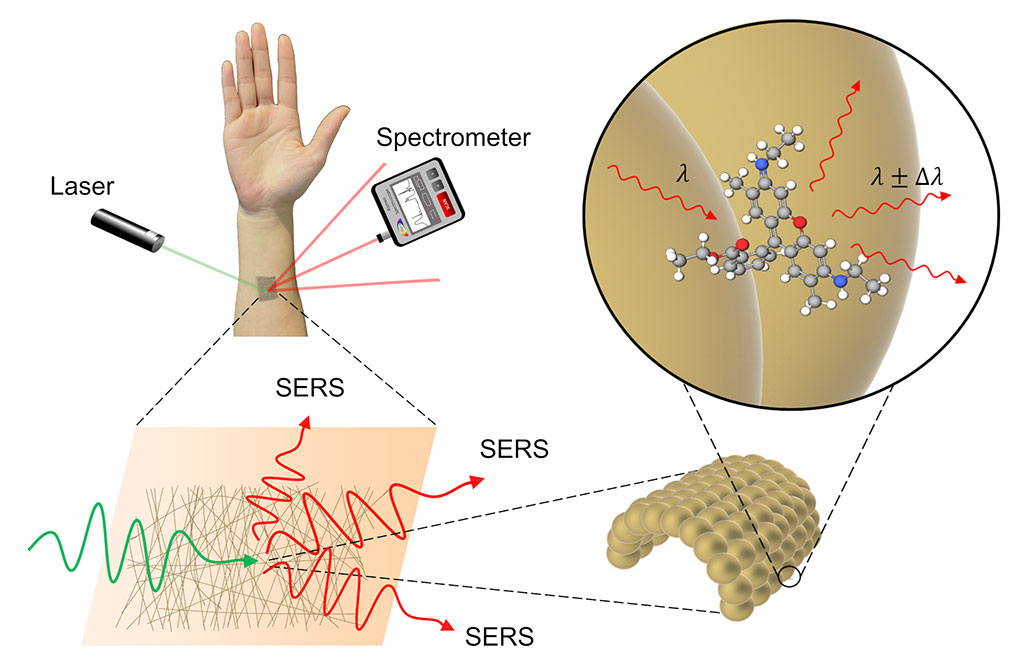Wearable Sensor Detects Viruses Through On-Body Chemical Analysis
Posted on 27 Jun 2022
Wearable technology is not new. For instance, most smartwatches can monitor certain health parameters such as heart rate, but cannot measure chemical signatures which could be useful for medical diagnosis. Smartwatches or more specialized medical monitors are also relatively bulky and often quite costly. Prompted by such shortfalls, researchers have developed a novel Raman chemical sensor made from noodle-like threads of gold, offering a new way to sense various health conditions in a non-invasive and cost-effective manner.
Researchers at The University of Tokyo (Tokyo, Japan) have created a special ultrathin sensor spun from gold that can be attached directly to the skin without irritation or discomfort. The sensor can measure different biomarkers or substances to perform on-body chemical analysis. It works using a technique called Raman spectroscopy, where laser light aimed at the sensor is changed slightly depending on whatever chemicals are present on the skin at that point. The sensor can be finely tuned to be extremely sensitive, and is robust enough for practical use.

The main component of the sensor is the fine gold mesh, as gold is unreactive, meaning that when it comes into contact with a substance the team wishes to measure - for example a potential disease biomarker present in sweat - it does not chemically alter that substance. But instead, as the gold mesh is so fine, it can provide a surprisingly large surface for that biomarker to bind to, and this is where the other components of the sensor come in. As a low-power laser is pointed at the gold mesh, some of the laser light is absorbed and some is reflected. Of the light reflected, most has the same energy as the incoming light. However, some incoming light loses energy to the biomarker or other measurable substance, and the discrepancy in energy between reflected and incident light is unique to the substance in question. A sensor called a spectrometer can use this unique energy fingerprint to identify the substance. This method of chemical identification is known as Raman spectroscopy.
“Currently, our sensors need to be finely tuned to detect specific substances, and we wish to push both the sensitivity and specificity even further in future,” said Assistant Professor Tinghui Xiao. “With this, we think applications like glucose monitoring, ideal for sufferers of diabetes, or even virus detection, might be possible.”
“There is also potential for the sensor to work with other methods of chemical analysis besides Raman spectroscopy, such as electrochemical analysis, but all these ideas require a lot more investigation,” said Professor Keisuke Goda. “In any case, I hope this research can lead to a new generation of low-cost biosensors that can revolutionize health monitoring and reduce the financial burden of health care.”
Related Links:
The University of Tokyo














